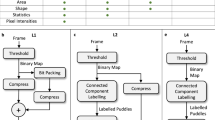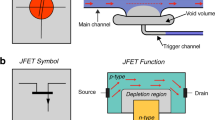Abstract
FROM the results of investigations on nylon capillary columns1, it became apparent that there were two possible applications for the capillary system. The columns could be used to produce very high efficiencies with elution times of 10–60 min., or the high efficiencies could be sacrificed and chromatograms developed in a matter of seconds, with moderate efficiencies of perhaps 5,000 or 10,000 plates. Under these conditions it was found that a chromatogram of a mixture boiling over a range of about 100 deg. C. would be developed in 60 sec., the early peaks being eluted during a period of about 0.5 sec., but it was necessary to use a high-speed recording system with time constants of the order of milliseconds. Such a performance cannot be achieved by the normal potentiometric recorder, and the oscilloscope is an obvious alternative method of presenting the chromatogram.
This is a preview of subscription content, access via your institution
Access options
Subscribe to this journal
Receive 51 print issues and online access
$199.00 per year
only $3.90 per issue
Buy this article
- Purchase on Springer Link
- Instant access to full article PDF
Prices may be subject to local taxes which are calculated during checkout
Similar content being viewed by others
References
Scott, R. P. W., Nature, 183, 1753 (1959).
Desty, D. H., Goldup, A., and Whyman, B. H. F., “The Potentialities of Coated Capillary Columns for Gas Chromatography in the Petroleum Industry” (to be published).
Author information
Authors and Affiliations
Rights and permissions
About this article
Cite this article
SCOTT, R. Cathode-Ray Presentation of Chromatograms. Nature 185, 312–313 (1960). https://doi.org/10.1038/185312a0
Issue Date:
DOI: https://doi.org/10.1038/185312a0
This article is cited by
-
Multicapillary Chromatographic Columns
Journal of Analytical Chemistry (2005)
Comments
By submitting a comment you agree to abide by our Terms and Community Guidelines. If you find something abusive or that does not comply with our terms or guidelines please flag it as inappropriate.



